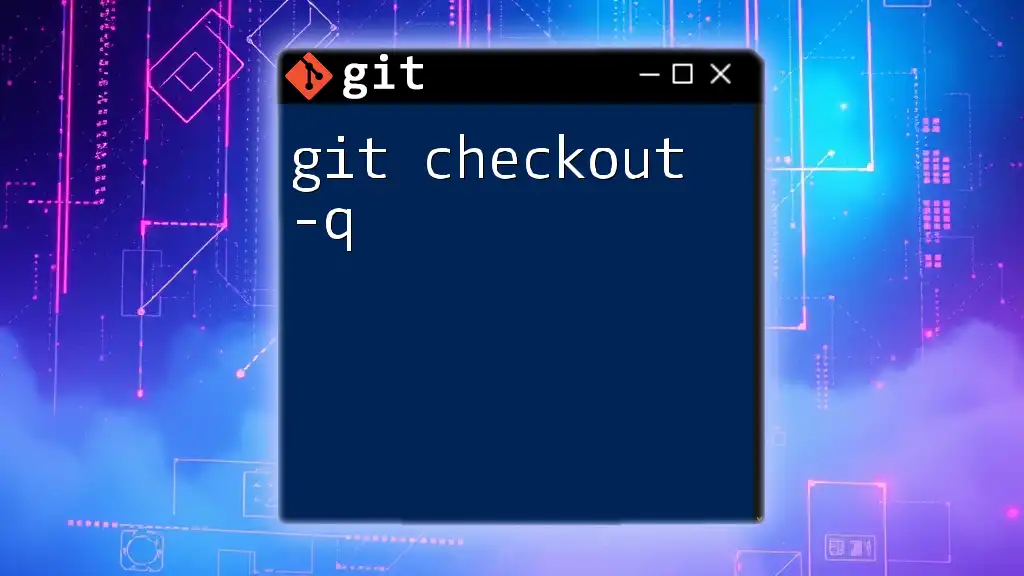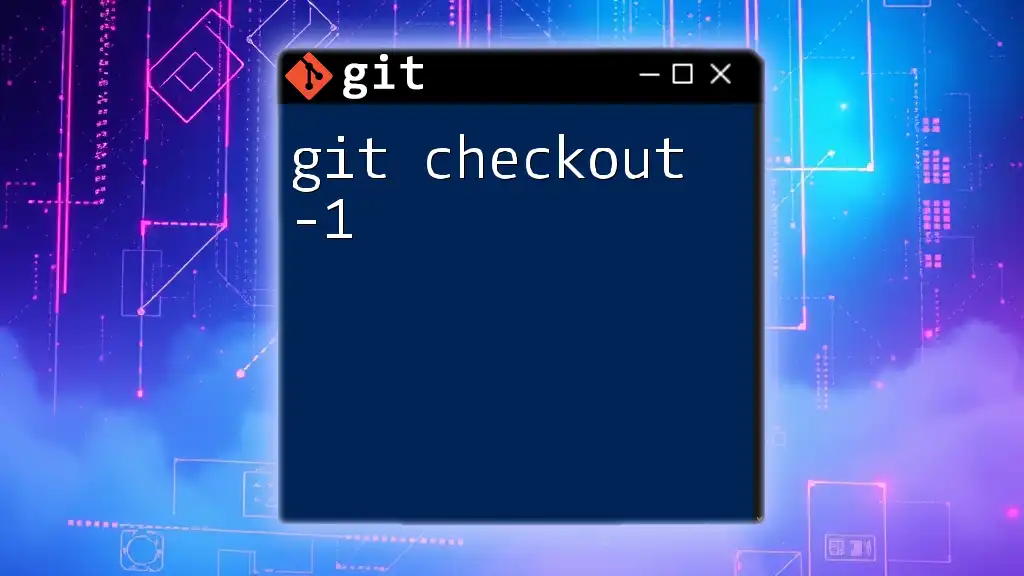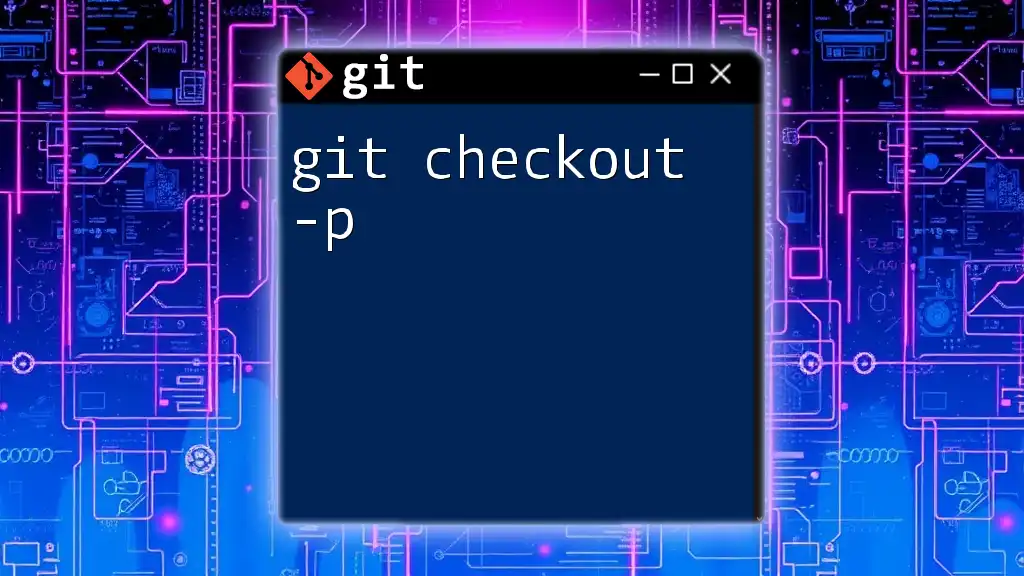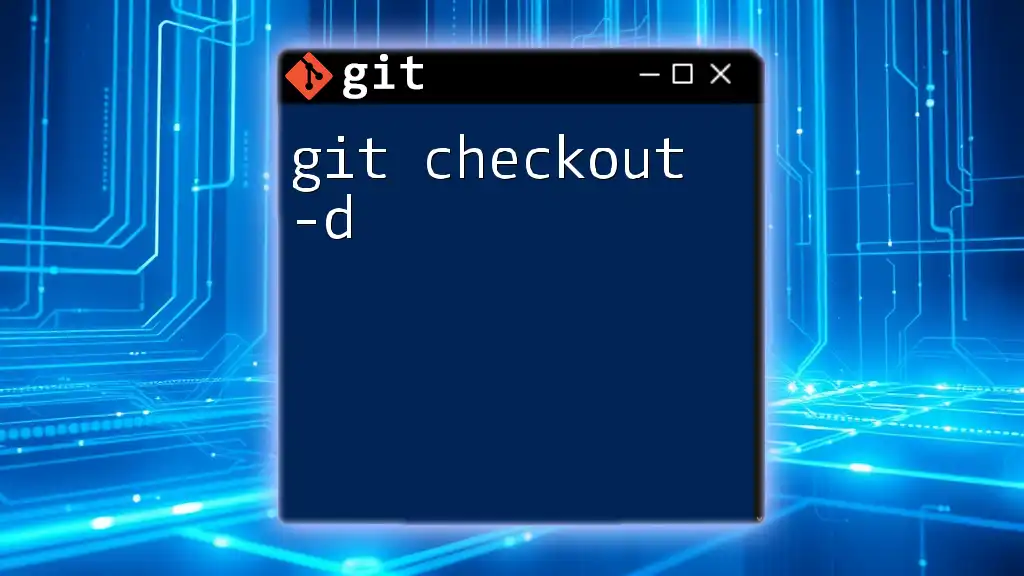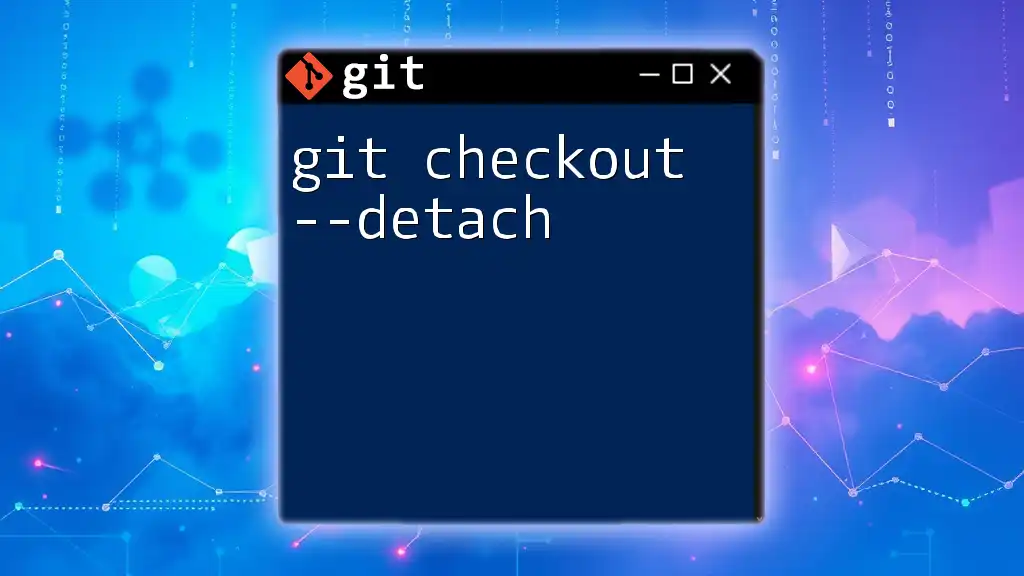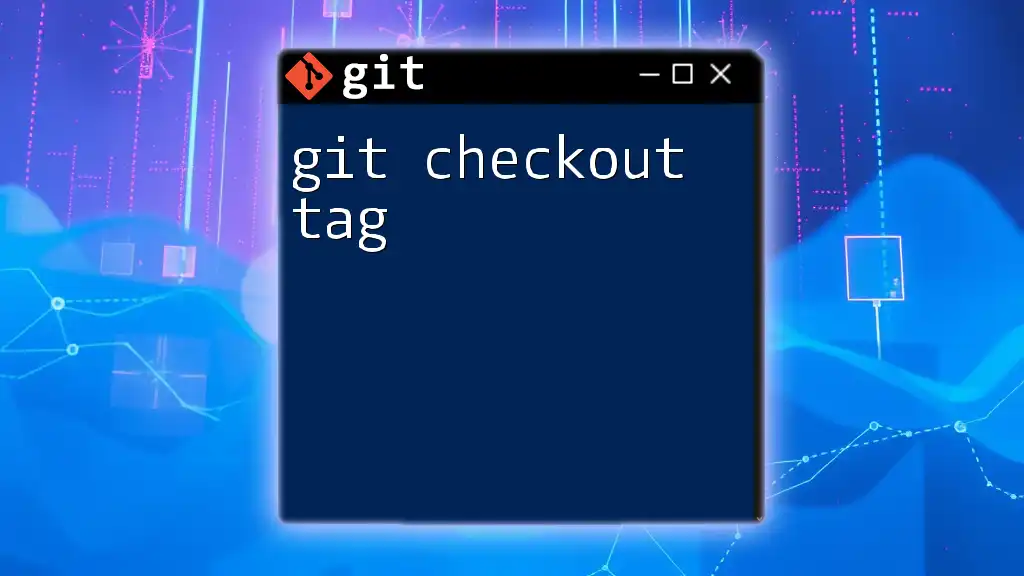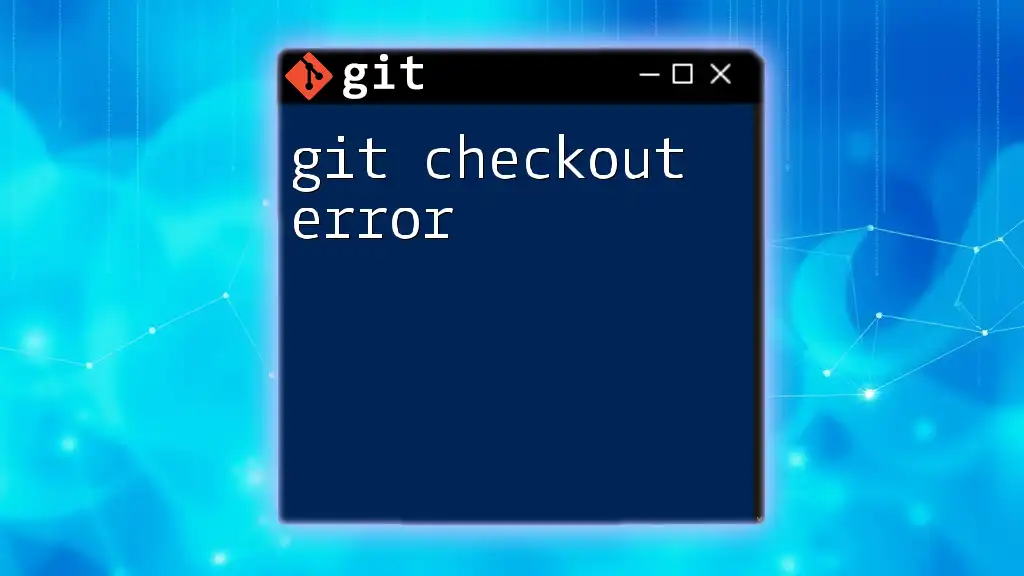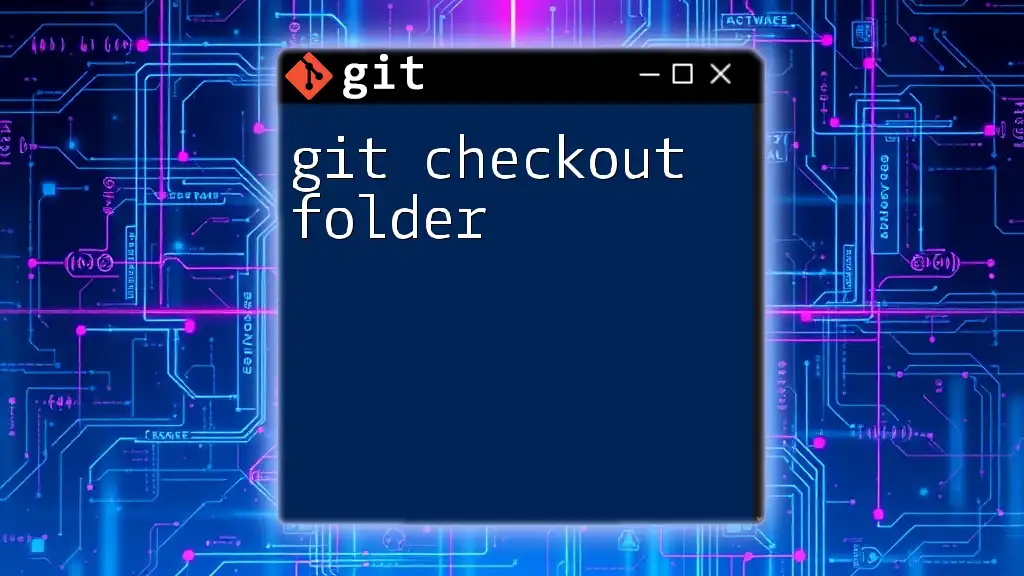The `git checkout -q` command is used to switch branches or restore files without displaying output messages, making it useful for scripting or when you want to keep the console clean.
git checkout -q branch-name
Understanding Git Checkout
What is Git Checkout?
The `git checkout` command is one of the most powerful tools in Git for managing your repository's history. With `git checkout`, you can switch between branches or restore files from specific commits. It's essential for navigating different states of your project and managing your development workflow effectively.
When you use `git checkout`, you can:
- Switch to an existing branch, allowing you to shift your focus from one feature or fix to another.
- Create a new branch if needed, helping you maintain a clean and organized project structure.
- Access specific commits, which is especially beneficial for testing or debugging.
How git checkout Works
The basic syntax for the command is:
git checkout <branch_or_commit>
When executed, Git looks for the specified branch or commit and updates your working directory to reflect that state. This includes changing the files in your project to match those in the branch or commit, and moving the HEAD pointer to that reference.
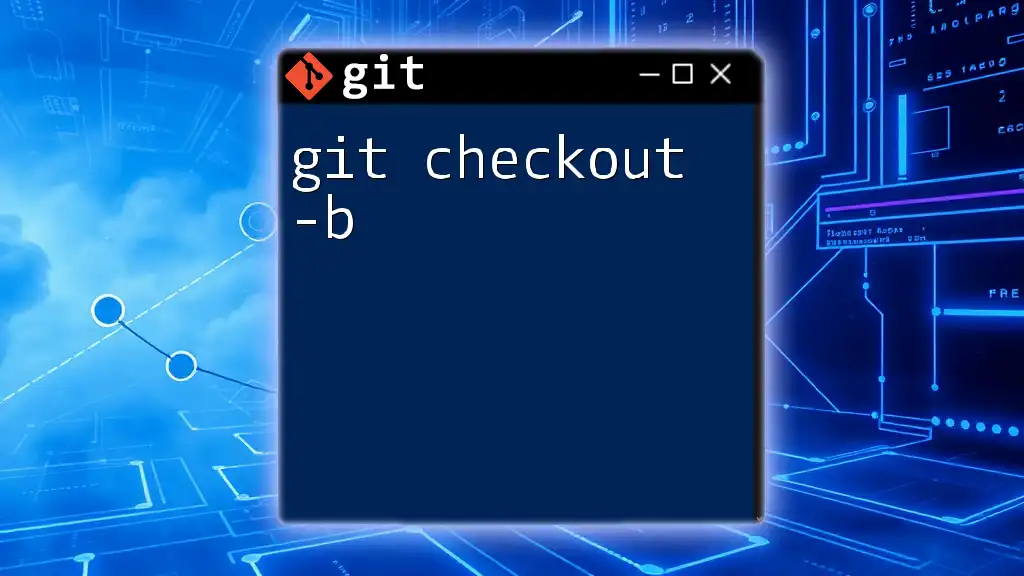
Introducing the `-q` Option
What Does the `-q` Option Do?
The `-q` option stands for "quiet," and it tells Git to reduce the output generated during the checkout process. By default, when you switch branches or restore files, Git provides feedback on what has occurred, such as which branch you have checked out or any changes that were made. However, this can sometimes clutter the terminal output, especially in larger projects with many files.
Using `-q` suppresses this output, allowing for a cleaner interface, particularly useful during extensive operations or in scripts where you may not need real-time feedback.
When to Use `-q` with git checkout
Choosing to use `-q` is advantageous in situations where:
- Automation: When including Git commands in scripts, such as deployment processes or batch operations, the additional messages can create unnecessary noise in your logs. Using `-q` can help maintain clarity.
- Large Projects: If you’re working on a large project with frequent checkouts, suppressing output can keep your console manageable, letting you focus on critical messages or errors while ignoring routine confirmations.

Practical Applications of `git checkout -q`
Using `git checkout -q` to Switch Branches
One primary usage of the `git checkout -q` command is switching branches without unnecessary output. For example, if you want to switch to your `feature-branch`, you would execute:
git checkout -q feature-branch
In this case, Git switches to the requested branch without crowding your terminal with messages, providing a seamless transition between contexts.
Using `git checkout -q` with Detached HEAD
Transitioning to a specific commit can also be done silently using `git checkout -q`. For instance, to check out a commit identified by a specific hash, you would use:
git checkout -q <commit_hash>
This command places you in a detached HEAD state, allowing you to inspect that commit without altering the current branch. While this is useful for testing purposes, it’s essential to note that any new commits made in this state won't belong to any branch unless you explicitly create a new branch or switch back, which could lead to confusion.

Best Practices for Using `git checkout -q`
Combining `-q` with Other Options
The `-q` flag can be combined effectively with other options to enhance your workflow. For example, if you want to create a new branch and immediately switch to it without output, you can run:
git checkout -q -b new-feature-branch
This command not only creates the new branch but also switches to it quietly, keeping your terminal output crisp and clear. This combination is especially beneficial for maintaining focus during rapid development cycles.
When to Avoid Using Quiet Mode
While turning on quiet mode can be beneficial, there are scenarios where receiving feedback is crucial. During operations like merging or rebasing, having visibility into what Git is doing can be invaluable. In these cases, suppressing output could lead to missing important messages about conflicts or changes.
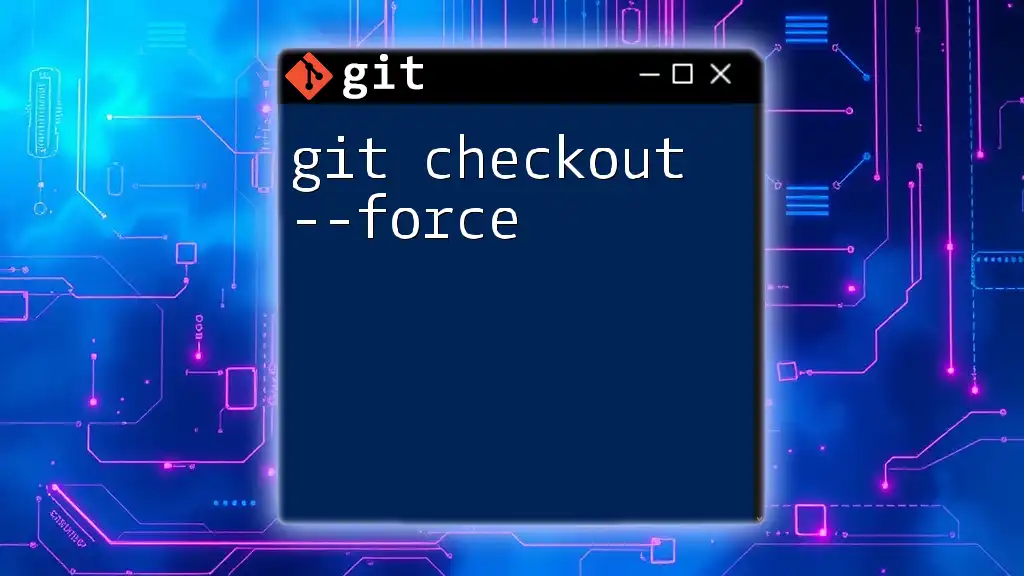
Conclusion: Mastering `git checkout -q`
Recap of Key Points
Mastering `git checkout -q` can significantly enhance your efficiency when navigating through branches and commits in your Git repository. The quiet mode provides a method to streamline your interface during operations, making it an excellent tool for both routine tasks and complex processes.
Encouragement for Practice
To fully grasp the capabilities of `git checkout -q`, practice using it in your daily workflow. Experiment with different commands, and combine `-q` with other options to find what works best for your specific needs. Consistent practice will solidify your understanding, making you a more proficient Git user.
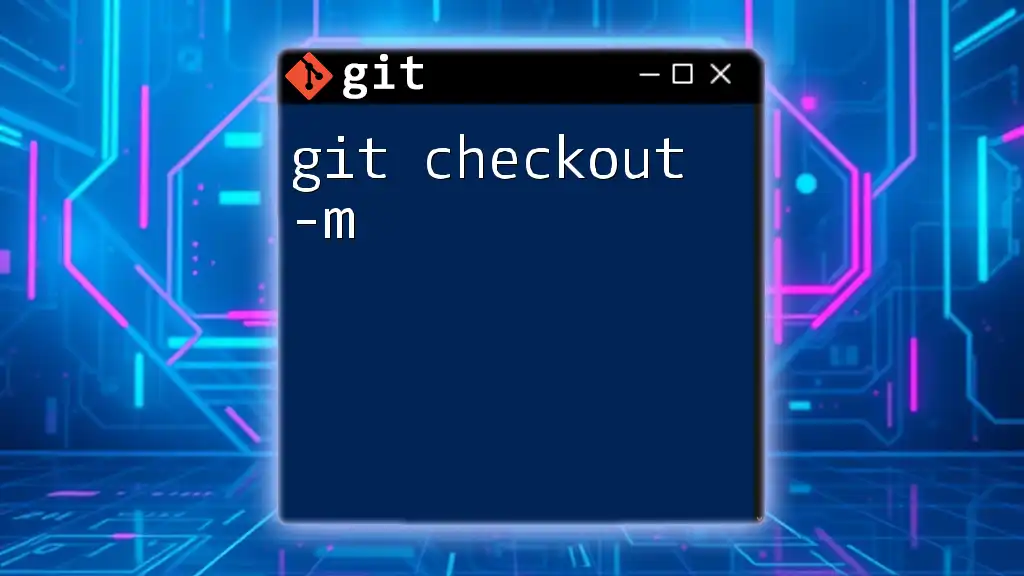
Additional Resources
Recommended Reading
For more in-depth knowledge, refer to the official Git documentation and seek additional articles or tutorials that delve into advanced Git usage, particularly around branching strategies and history management.
Tools for Learning Git
Consider participating in interactive Git courses that can help reinforce your skills. Also, using Git graphical user interfaces (GUIs) alongside command-line tools can provide a well-rounded experience and enhance your understanding of version control principles.

